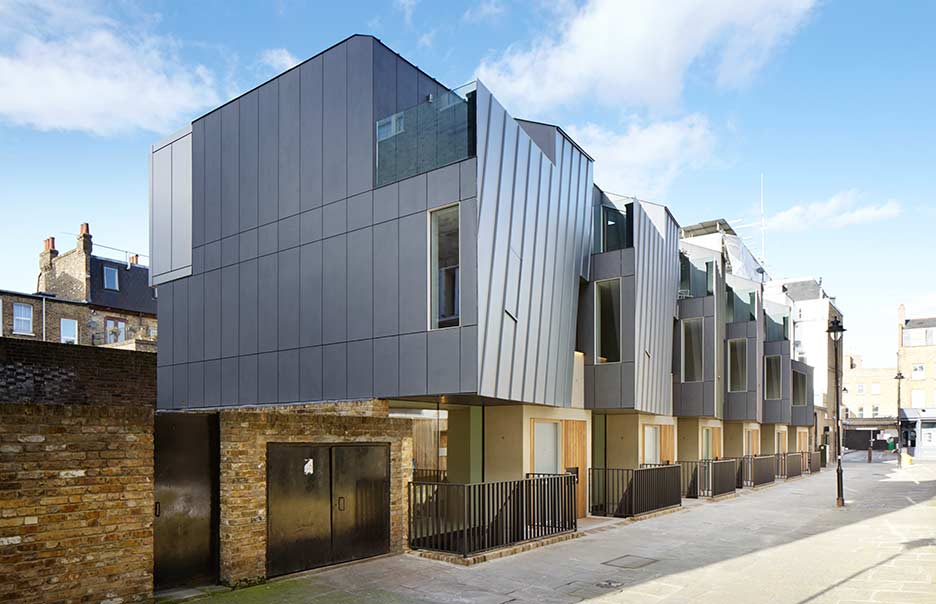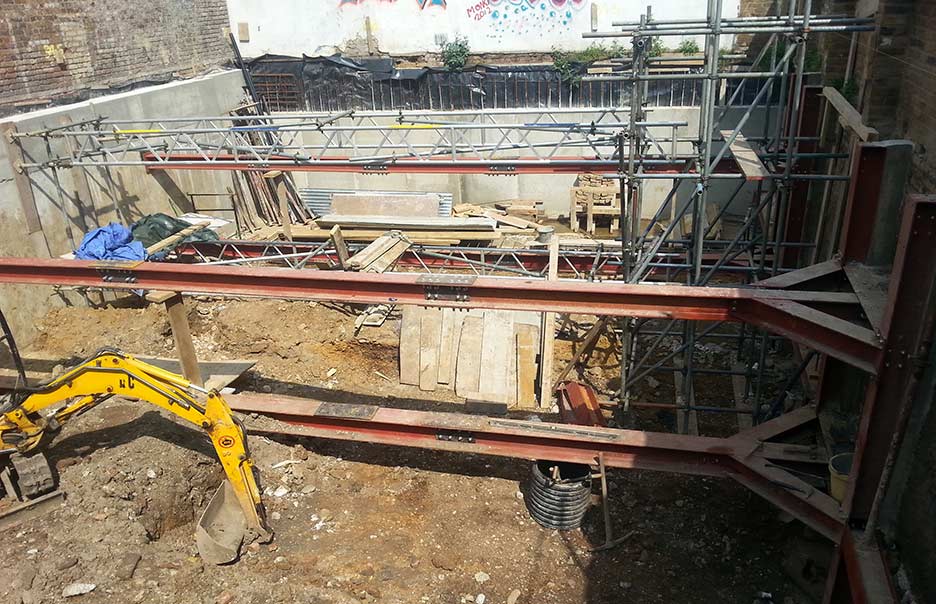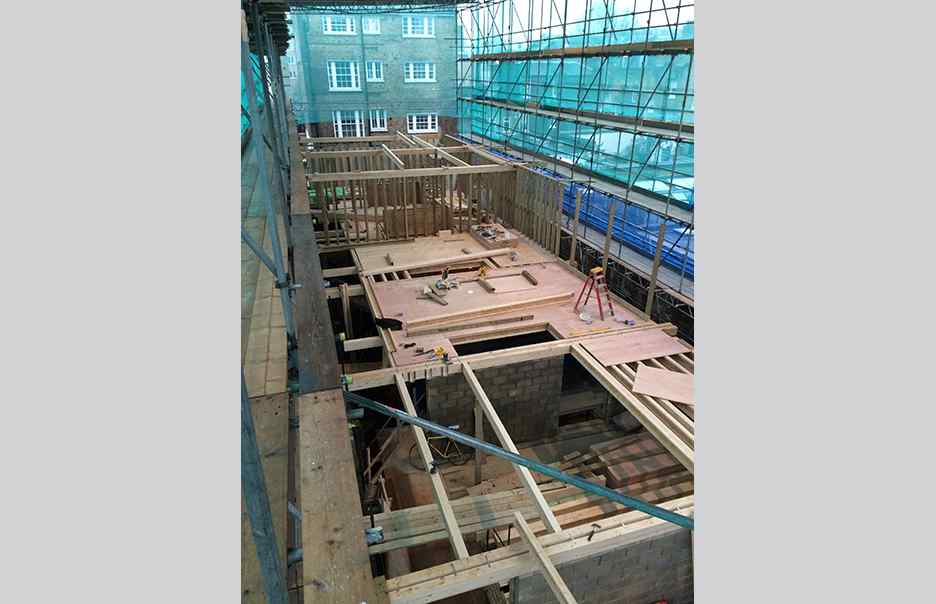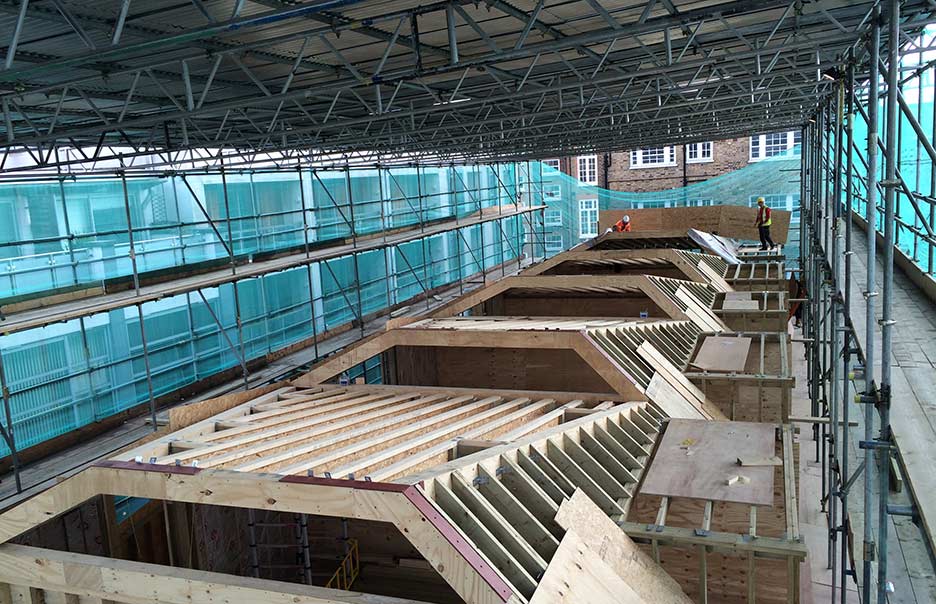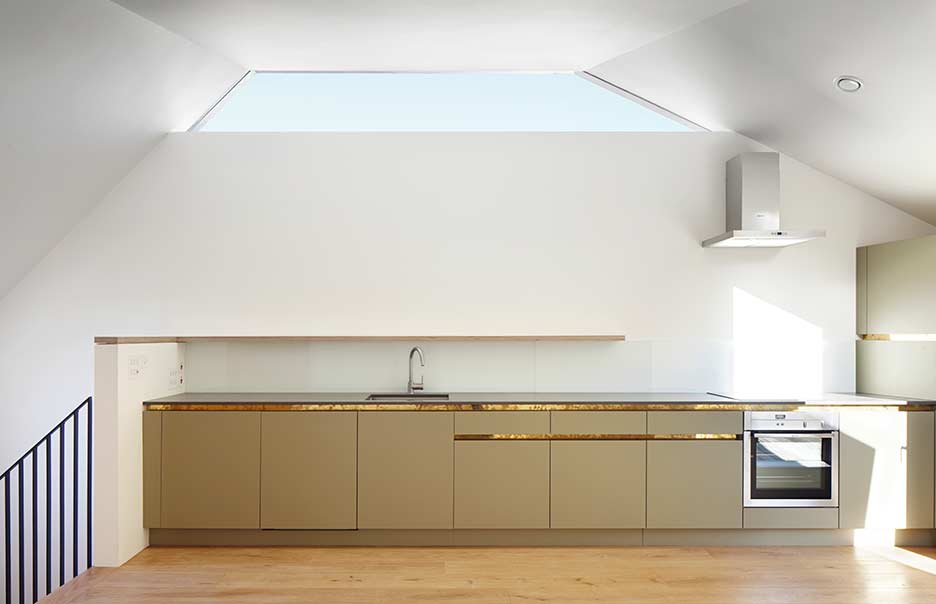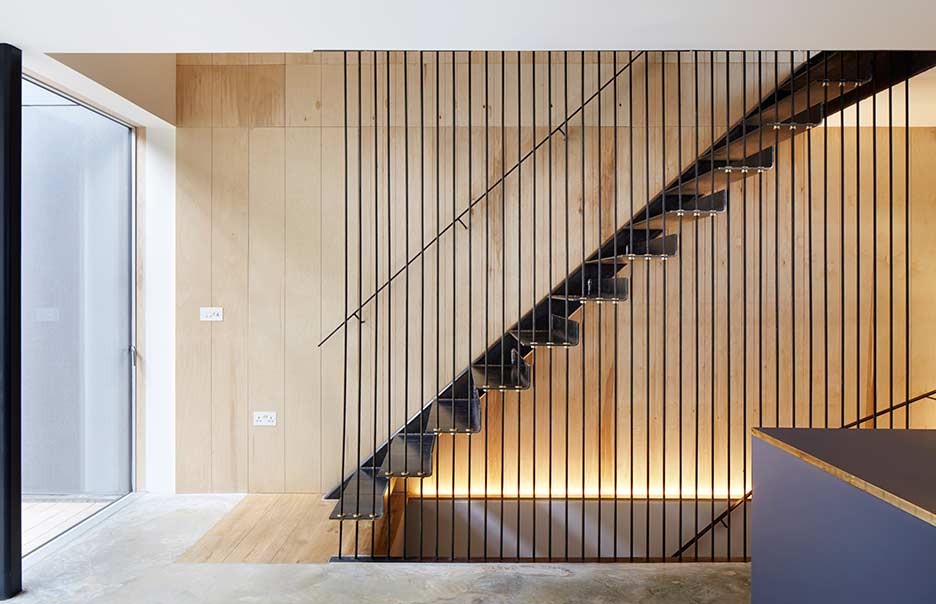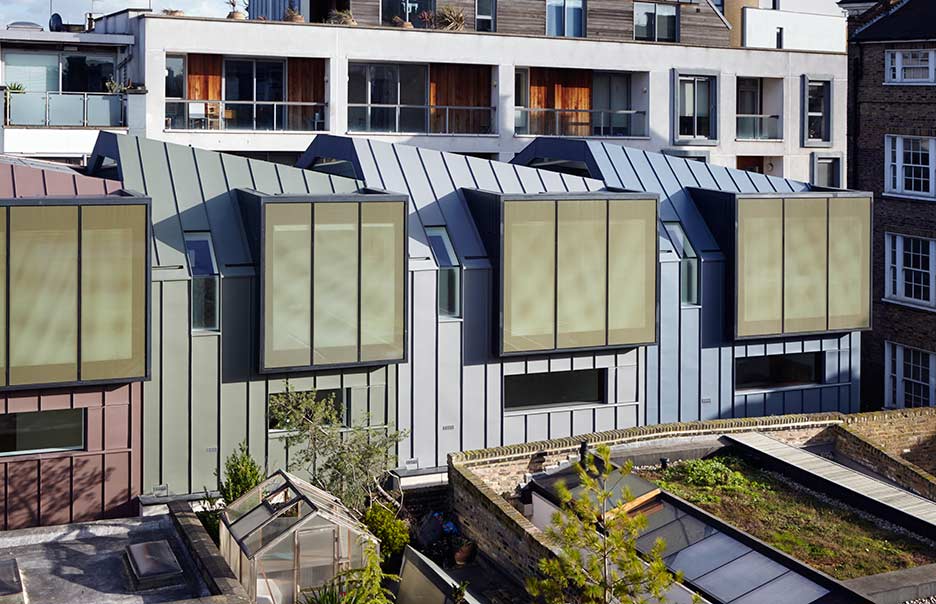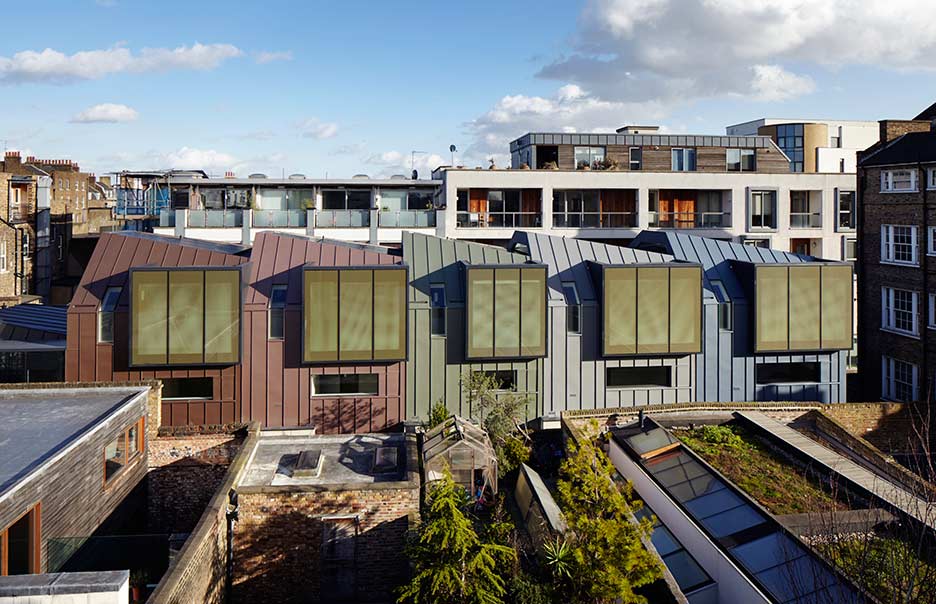Godson Street
Six properties were constructed as part of a stand-alone single development offering both commercial and residential accommodation. The building is sited in Angel, Islington and has a basement and three storeys above this level.
The site is bounded by surrounding properties on a private road with no access for vehicles. Access to the site was therefore severely limited and this required consideration in selecting appropriate structural forms.
A reinforced concrete box forms the basement and ground floor levels. As the site used to be populated by houses with cellars, there was a retaining wall to main street elevation. This was retained and incorporated into the design with new buttressing walls provided to replace lost restraint.
Above ground floor a timber frame construction has been utilised with party walls forming the main load bearing elements to accommodate steps in the front and rear elevation. Glulam beam wall plates were used like runners for draws to allow the front and rear elevations to step.
The roof structure is of an undulating form with large openings required for high level fenestration. Trussed glulam frames were conceived as means of achieving the large spans required for the glazing without intermediate supports.
In one of the units a bespoke steel stair has been installed with steel rods used to form the balustrading. The rods are connected to the glulam trussed timber roof structure. This has required very careful analysis and detailing to achieve a satisfactory balance between tightness in the rods and not overstressing the roof structure.
Sequencing drawings were prepared for this project to illustrate to the Contractor how they could safely carry out the basement excavations works without the need for a piled retaining wall but whilst maintaining stability to the adjacent structures and land.
Temporary works design involving the provision of steel shores was also carried out and designed in such a way to give the Contractor maximum access on the site to carry out their works.
Project Architect: Edgley Design
Photographs: Ben Kirk (construction) and Jack Hobhouse




